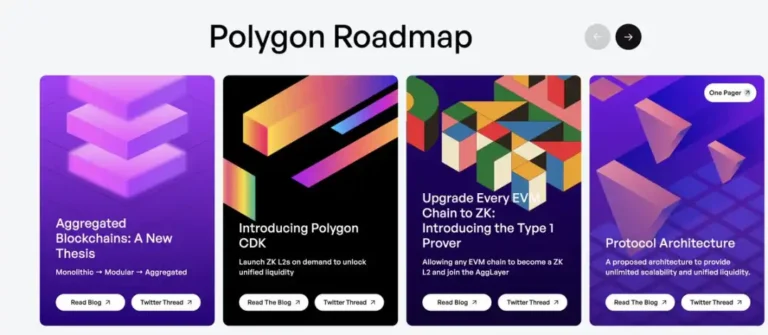Polygon’s Major Token Upgrade Boosts Ecosystem with POL Migration
- Polygon initiates MATIC-to-POL token migration at a 1:1 ratio.
- Validators to receive 200 million new tokens annually to support network growth.
- AggLayer ensures liquidity for Layer 2 (L2) solutions in the ecosystem.
- Stakers may benefit from additional airdrops, potentially driving staking demand.
Polygon Initiates MATIC to POL Migration
Polygon, a leading Ethereum scaling solution, has officially begun migrating its native token, MATIC, to the newly introduced POL token. This migration, first announced last year, is part of a broader initiative to enhance the network’s capabilities and token economics. Holders of MATIC can now swap their tokens for POL at a 1:1 ratio, with centralized exchanges like Binance and OKX handling the process for users.
The migration represents a significant step in Polygon’s roadmap, which aims to upgrade its Proof-of-Stake (PoS) chain to a more scalable and efficient ZkEVM Validum chain. The new chain promises faster finality and integration with AggLayer, Polygon’s unified liquidity layer designed to support Layer 2 (L2) solutions.
In addition to the POL migration, decentralized exchanges (DEXs) and DEX aggregators are also offering user interfaces for token migration. Alternatively, users can complete the process manually via the Polygon migration portal or smart contracts.
Token Economics Overhaul to Incentivize Validators
As part of this upgrade, Polygon has revamped its tokenomics. One of the major changes is the reintroduction of rewards for validators, a move that comes after the end of Polygon’s token inflation cycle last year. Without these rewards, maintaining network growth and validator participation became increasingly challenging.
To address this, Polygon has committed to introducing 200 million new POL tokens annually into circulation over the next decade. These tokens, valued at around $100 million (assuming 1 POL = $0.5), will serve as the baseline reward for validators. Polygon is also offering additional bonuses to validators who take on other roles within the network, such as supporting different chains.
Polygon’s AggLayer, a key component of its infrastructure, will play a crucial role in ensuring liquidity across the ecosystem. Validators and stakers will earn rewards from multiple sources, including token inflation cycles, AggLayer fees, and additional token rewards from Polygon’s CDK chains. These incentives are expected to boost participation and staking activity, which has been relatively low due to a lack of rewards in recent months.
Staking Incentives and Potential Airdrops
Currently, Polygon’s staking yield sits at approximately 5.65%, which is competitive compared to Ethereum but lower than other networks like Solana and Avalanche. However, with the introduction of POL and new inflation policies, the yield is expected to rise to 7-8%. Additionally, as AggLayer and CDK chains gain traction, staking rewards could increase further.
Polygon’s strategic approach to building a robust validator and staking ecosystem doesn’t stop there. The network plans to offer even more rewards in the future, such as shared sequencing revenue and ZK proof income. These developments are likely to attract more stakers, driving demand for POL tokens.
Moreover, Polygon is hinting at the possibility of ecological airdrops, akin to Celestia’s model. These airdrops could significantly boost staking participation, triggering FOMO (fear of missing out) and potentially increasing the number of stakers from the current 33,000 to over 100,000. With over 10 large projects already part of AggLayer, the chances of airdrops occurring seem promising.
In summary, Polygon’s token upgrade and economic overhaul are well-timed moves that could drive significant demand for POL tokens and strengthen the network’s long-term growth. The introduction of AggLayer and the focus on incentivizing validators are key components of this strategy, positioning Polygon as a leader in the Ethereum scaling ecosystem.


